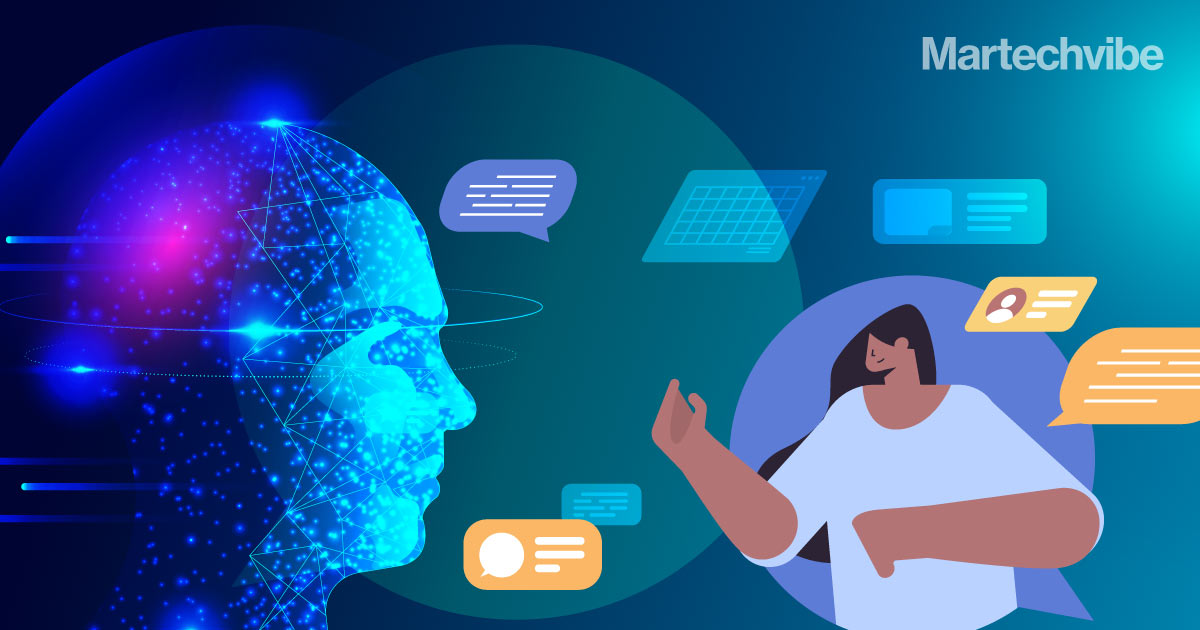But the technology powering automation has come a long way since the days of these first-generation bots that relied on keywords,” says Antje Gallo, Head of Enterprise Customer Success at Ultimate.
Chatbots are evolving, finding applications across industries and services. The data they are fed on is improving, and hence, so are the results. The most profound impact is being observed in the customer support function. We discuss automation and multiple facets of conversational AI with the customer support automation platform Ultimate AI to understand the operations from a vendor perspective.
Gallo from Ultimate shares insights on how generative AI is powering customer service, the common blockades and how to overcome them, and how behavioural data makes these conversations more humane.
Automation eases workload and availability for client support teams
With the rise of ChatGPT, conversational AI has been catapulted into mainstream consciousness, and bots are leaving their bad reputation behind. Today, automation streamlines workflows and frees up support teams by:
- Sending automated answers to common customer questions and resolving FAQs — so agents can save their talents for more complex and high-value tasks where their expert knowledge is needed.
- Collecting customer information up-front before escalating inquiries to give agents the context they need to solve issues faster and cut cost per interaction.
- Using AI to understand the exact intent behind a customers’ question and automatically routing queries to the right department, driving down resolution times.
- Enriching tickets by adding tags and labels or pre-filling details — saving agents from repetitive, manual tasks
From Gorillas to GetYourGuide, Zendesk to Zalando, the brands we work with at Ultimate use our advanced solution to resolve support requests across all text-based communication channels, including chat, email, social media, and messaging apps. Each custom-built solution works within a company’s existing tech ecosystem, allowing the bot to interact with their helpdesk, CRM, and back office systems. This allows the virtual agent to perform sophisticated actions — like checking on the status of an order, changing a delivery address, updating personal account information, and more — to fully automate complex processes end-to-end.
Barriers to getting started with conversational commerce
Previously, one of the biggest barriers to getting started with automation was a lack of trust in AI. Brands were concerned that a conversational AI solution would be difficult and expensive to launch, and that using a bot to serve customers would provide frustrating, off-brand interactions — that, in turn, drive CSAT down and negatively impact retention. But our in-house market research shows this anxiety around AI is starting to fade: 92% of respondents say their trust in AI had increased over the past 12 months, and 88% of business leaders report that customers’ attitudes toward automation have improved in the last year.
Despite attitudes towards AI and automation improving, other barriers still exist. If customer service teams aren’t enthusiastic about automation, or there’s missing buy-in from decision-makers, this can prevent automation projects from getting off the ground. Companies might not have the right team in place to decide which processes to automate, design and build the bot, and train the AI model — so the need to hire a specialist workforce or reallocate roles within support teams could discourage leadership from seeking automation solutions.
Another issue is that small to medium-sized businesses might want to automate part of their support, but often these companies don’t have high enough volumes to see real ROI with a complex AI-powered solution. Finally, an unclearly defined support automation strategy or lack of alignment in terms of internal goals (such as launching multilingual support to expand into new markets, or providing 24/7 customer care) can cause decision-makers to dismiss the value of conversational AI software.
Behavioural data feeds conversations, makes them empathetic
For every brand we work with at Ultimate, we build a custom AI model trained on their own historical support data — the real conversations that agents have with customers every day. This creates an industry-specific virtual agent unique to their brand and customer base. And as the bot continues to be trained on new conversational data, it can identify and respond to customer questions even more accurately.
With the help of CRM and backend integrations — that connect different programs and allow them to securely exchange data — the virtual agent can pull customer information from these systems. This might be personal details, past order history, or if items in the cart have been abandoned before payment. Conversations can be tailored to specific situations, like whether a customer is logged in or not. All this makes the experience more personalised and empathic.
But for these intent-based AI solutions (where instead of relying on keywords, the AI model is trained to recognise all the different ways a customer might ask about the status of an order, or what to do if an item arrives damaged), much of what makes the conversational experience more empathetic is human-centred conversation design. Thoughtful, well-planned dialogue flows that keep customers front of mind are key to delivering empathic experiences that drive business results.
Omnichannel complexity in conversational AI
Providing an omnichannel experience is essential to meeting customer expectations, but it can be a headache for support teams. More channels mean more tickets, so customer service departments have to take a staggered approach when launching new communication channels to make sure agents don’t end up being overwhelmed by higher request volumes. Find out which platforms your customers are using and ask where they want to interact with your brand, then prioritise automating the most popular.
If a customer sends an email, then accesses your chat widget to search for self-service resources, then reaches out via social media if they haven’t been able to resolve their issue on their own — this creates three separate support requests in your helpdesk. So another challenge is making sure agents have a holistic understanding of all customer interactions with your brand.
On the more technical side of things, you’ll likely have to use different methods to authenticate users on each channel, when dealing with sensitive customer data. Also, we communicate in different ways on different platforms (most people don’t end their WhatsApp messages with a sign-off phrase, but it’s unusual to receive an email without one). A central challenge then is around creating automated experiences that make sense and remain on-brand across communication channels — but also provide seamless CX for customers switching between these.
Team training when onboarding to the solution
This varies from company to company, depending on individual business needs and the complexity of their existing tech stack, but as a general rule for enterprise brands, a good team setup to onboard the solution has three key components:
- A project lead to own the strategy and implementation, as well as internal communications and stakeholder management.
- Experienced agents to take on day-to-day automation management, which involves building the virtual agent, mapping dialogue flows, monitoring the bot’s performance, and optimising the solution — but previous experience working with automation tools isn’t needed.
- A technical CRM admin and a backend engineer to work with Ultimate’s integrations team building custom integrations with back office systems — although engineering support is more of a nice-to-have than an absolute necessity.
Once the bot is live, support agents who don’t work with the automation directly will still need to be trained on new processes. And for those who will continue working with the virtual agent, part of their role will be monitoring and improving its performance.
One of the things the brands we work with love most about Ultimate is the ongoing support they receive from our Customer Success team. Each company is assigned a Customer Success Manager who customises and drives the onboarding process, ensures the project team is confident using Ultimate’s dashboard, and supports building and optimising the virtual agent.
Getting started on a new automation project can seem daunting. For brands to get the most value from a conversational AI solution, they can’t just set-and-forget their bot. At Ultimate, we continually support the businesses we work with to keep optimising their solution — analysing where visitors drop out of conversations to keep iterating and delivering higher resolution rates. With conversational AI technology, you get out what you put in: companies that commit more time and energy to their virtual agent will see the highest ROI.











































































































